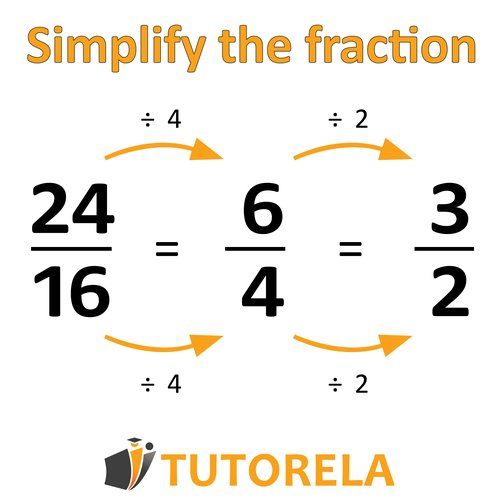We will perform the same multiplication operation on the numerator and the denominator: the value of the fraction will be preserved.
You can expand as many times as you want and by any number.
Master simplifying and expanding fractions with step-by-step practice problems. Learn to multiply and divide numerators and denominators while preserving values.
We will perform the same multiplication operation on the numerator and the denominator: the value of the fraction will be preserved.
You can expand as many times as you want and by any number.
We will perform the same division operation on the numerator and the denominator: the value of the fraction will be preserved.
This can only be done with a number that is completely divisible by both the numerator and the denominator.
It is possible to simplify only until reaching a fraction in which it is not possible to find a number that divides without remainder both in the numerator and the denominator.

Increase the following fraction by a factor of 8:
\( \frac{8}{9}= \)
Simplify the following fraction:
Let's reduce as follows, divide the numerator by 4 and the denominator by 4:
Answer:
Simplify the following fraction:
Let's reduce as follows, we'll divide both the numerator and denominator by 1:
Answer:
Simplify the following fraction by a factor of 5:
Let's reduce as follows, we'll divide both the numerator and denominator by 5:
Answer:
Simplify the following fraction by a factor of 2:
Let's simplify as follows, we'll divide both the numerator by 2 and the denominator by 2:
Answer:
Simplify the following fraction:
Let's simplify as follows, we'll divide both the numerator by 2 and the denominator by 2:
Answer: